Which city has the following things named after itself? A bathing soap, a type of south Indian fast food with stuffing, a variety of silk, a soft and porous sweet dish with a lot of ghee and an erstwhile State Bank subsidiary. The names are: Mysore sandal soap, Mysore masala dosa, Mysore silk, Mysore Pak and State Bank of Mysore. Nestled at the foot of Chamundi hills and watched over by Chamundi Devi or the Mahishasuramardhini, the city of Mysuru is one of the most beautiful, ecologically most balanced and tourism-wise most abundant locations in India. During India 360, Mysuru was one of our most enjoyed cities in India. This was enhanced by the fact that we were at Mysuru right during Navratri and Dassera, when the city is a potpourri of funfairs, performances, flower and food fests.
A short history of Mysuru
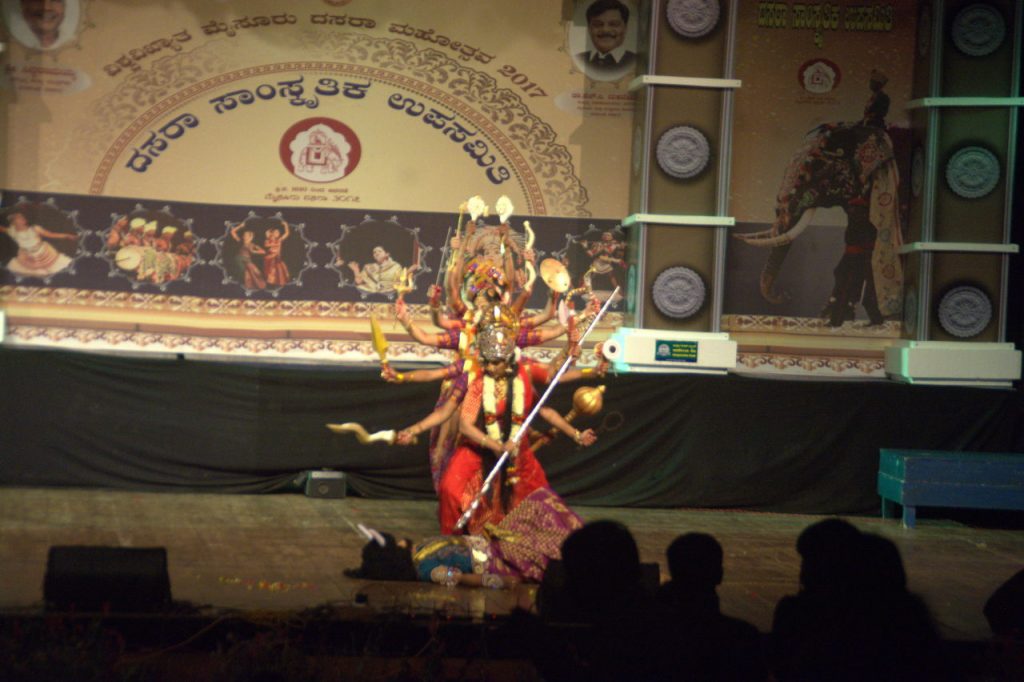
Mahishasura Mardini’s story is very close to Mysuru’s heart.
The name Mysuru comes from Mahishasuramardhini which means the slayer of the buffalo demon. There is a popular Hindu mythology that says that Mysuru was tormented by Mahishasura (Mahisha Asura) or the buffalo demon. The grand way in which Mysuru celebrates its Navratri and Dassera, revering godess Shakti, stands testimony to this story and etimology.
Mysuru was ruled by the Wodeyar rulers for 6 centuries from 1399 until the time that India became a republic. During the late 1700s, Mysore was briefly seized by the Sultanate from across the river, when Tipu Sultan held Srirangapattana as his capital until his death in 1799. The modern day Mysuru was envisioned by King Chamarajendra Wodeyar the 10th, who set up the Mysore Zoo, the present municipal office, several colleges, schools and industrial training centres, many dedicated to the sandalwood industry. The Wodeyar family still lives in Mysuru palace today. But they are no longer rulers after the treaty of 1950, when Mysuru ceased to be a kingdom. Mysuru was the headquarters of the Mysore presidency for a while. Then the formation of Karnataka state and the shifting of headquarters to the cantonment city of Bengaluru turned Mysuru from an administrative heaquarters to Karnataka’s cultural hub.
During the British rule, the spelling of the city was anglicised to Mysore, as it is still unofficially referred to today. In 2014, the official name was restored to Mysuru, an exact representation of the Kannada spelling. This is when the Karnataka government went on a renaming spree in October 2014, changing the English names of 12 cities to match the Kannada spellings, some of them including Belagavi (Belgaum), Hubballi (Hubli), Vijayapura (Bijapur), Mangaluru (Mangalore) and Shivamogga (Shimoga).
Geography of Mysuru
Mysuru is at the foot of Chamundi hills and is on the southern bank of the Cauvery river. The Krishna Raja Sagara dam holds the river in Mandya district, about 16 km from Mysuru city. To the south of Mysuru, beoynd Chamundi Hill, is the Eastern Ghat mountain range. These are mountains ranging from 1500 to 2000 metres in altitude with an evergreen tropical forest. The forests are famous for sandalwood and several medicinal herbs. To the west of Mysuru is the coffee growing district of Coorg, which lies on the Western Ghats.The Eastern Ghats meet the Western Ghats near Ooty in Tamil Nadu, about 160 km away. Mysuru is about 100 km from both the Kerala and Tamil Nadu borders. It is about 150 km south-west of the state capital, Bengaluru.
Let us take a tour of the best places to see in Mysuru.
Mysore palace
- Mysuru Wodeyar Palace by night.
- Mysuru Wodeyar Palace by night.
- Coloured domes at Mysuru Wodeyar palace.
Commissioned by Krishnarajendra Wodeyar and used by the royal family, the Mysore palace was built in 1897. The Mysore palace is the centre piece of a city which is architecturally exemplary. Part of the Mysore palace is open to public. The interiors of the palace showcase high ceilings, tall pillars, cavernous hallways and an excellent collection of art. Part of the art is the typical woodwork that Mysuru is famous for. Ceilings have patterns made of natural dyes. All pillars have wood work and carving. The door lintels and frames are beautifully carved too. Plenty of silverware is showcased in glass enclosures. At 7 pm every evening, the lights on the exterior of the palace are turned on. The sight is gorgeous. This is the only palace of the three in Mysuru where public photography is allowed.
Lalita Mahal palace
This is the second of the three famous palaces in Mysuru. Lalita Mahal is right at the foothill of Chamundi hills. Similar to the Mysore palace, the Lalita Mahal palace showcases the artistic taste of the Wodeyars. There are grand marble staircases cases with balustrades carved with art. The walls are decked with paintings and Mysuru woodwork. The ceiling is covered with patterns made from natural dyes.
Jaganmohan palace
The Jaganmohan palace is very close to the Mysore palace. It is now exclusively an art gallery and has two floors of exhibits. The best work in these galleries are done by the legendary Raja Ravi Varama of Travancore.
Town hall
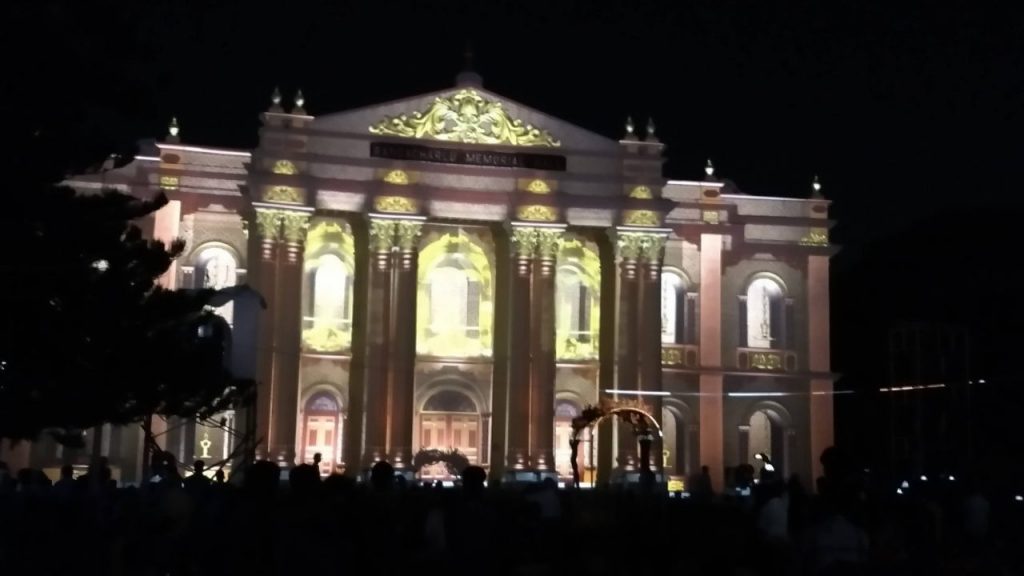
Mysuru town hall, also known as Rangacharlu Memorial Hall
This is the city’s convention place and gathering spot for large public shows. The town hall is used by the city for special occasions. Public celebrations such as for light and sound shows during Navratri happen here, using the building’s large facade as the screen. The town hall is also called Rangacharlu Memorial Hall.
Chamundi hill and Mahishasuramardhini temple
- Mysuru’s famous Chamundi Devi temple.
- Statue of Mahishasura outside Chamundi Devi temple, Mysuru.
To the south of Mysuru city, the road ascends steeply up Mysuru’s oldest landmark, the Chamundi Hills. At the top of the hill is the temple dedicated to Chamundi Devi, the one known as Mahishasuramardhini, the slayer of the buffalo demon king who oppressed the people of Mysuru. The temple draws pilgrims from all over Karnataka and even across the border from Tamil Nadu and Kerala. At the centre of the township on top of the mountain is a statue of Mahishasura with his sword. Halfway through the climb is a viewpoint that overlooks the city of Mysuru, from where one can see the palaces and several famous landmarks.
Mysore zoo
- At Mysuru Zoo, India’s first, largest and richest zoo.
- Bonobo ape at Mysuru Zoo, India’s first, largest and richest zoo. Bonobo is the closest predecessor to human beings. You can see the human-like musculature in the arms, shoulders and thighs. Mysuru zoo is the only zoo with a bonobo.
- At Mysuru Zoo, India’s first, largest and richest zoo.
- At Mysuru Zoo, India’s first, largest and richest zoo.
Started in 1892 by King Chamarajendra Wodeyar the 10th, Mysore Zoo is the oldest zoo in India and also the largest. The collection of animals is staggering. Mysore Zoo also has an innovative program of seeking lifetime sponsors for each of its animals. Individuals have pledged annual support for certain animals in the zoo, thus adopting an animal. This program keeps the quality and the upkeep of the zoo in excellent condition. The rarest exhibit at Mysore Zoo is a Bonobo ape, which is one step below human beings in evolution.
Brindavan gardens
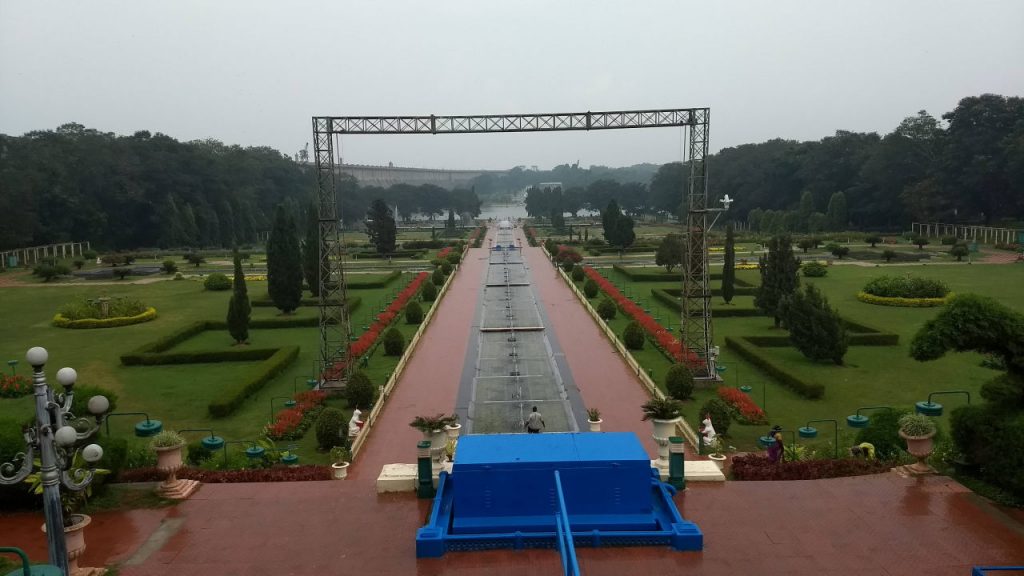
View of the sprawl and beauty of Brindavan gardens. You can also see the Krishna Raja Sagara dam in the background.
The Brindavan Gardens are not exactly in Mysuru city. They are 16 km to the north of the city, on the southern bank of the Cauvery river. The Brindavan gardens are India’s oldest curated botanical gardens. They are built on the leeway of the Krishnarajasagara dam in Mandya district. The garden complex has sprawling lawns with walkways, an aquarium, a glass house and several gaming complexes. There is also a resort named Royal Orchid just outside the gardens.
Ranganathittu bird sanctuary
- Entrance to the Ranganathittu bird sanctuary.
- A pelican sits at the top of a tree at Ranganathittha bird sanctuary.
Dr Salim Ali bird sanctuary at Rangathittu, Mandya district is a bird spotter’s heaven. It lies off the road that leads to Brindavan gardens from Mysuru. There is a walkway right by the river after going through the entrance. There are two sight towers on the walkway from where one can spot birds. Then there is a boating point where one can get tickets for boats that take us into the river and right by the trees where various birds roost. There are also crocodiles resting by the shores of the river islands. If you are lucky, you can even see some of them swimming in the water very close to you!
During Navratri / Dassera
- Kathak performance in front of Mysuru palace during Navratri fest.
- A floral gown displayed on a mannequin at Mysuru flower show.
- Just like Republic day at New Delhi does for whole of India, the Dassera procession at Mysuru showcases regional performances and chariots representing different districts and departments in Karnataka.
- The climax of the Dassera procession is the statue of Maa Chamundeshwari atop a decorated howdah on an elephant back. Elephants are hand-picked for the occasion and most of them are senior pachiderms from Dubbare elephant camp at Kushalanagara, Coorg, with a Dassera experience of two decades or more. The superstar elephants gets to carry Maa Chamundeshwari all the way up the Chamundi Hill.
Mysuru is one of the best places to be in India during Navratri / Dassera festival. Several places in the city rise to the occasion. The Kala Bhavan, Mysuru palace and the exhibition grounds across the palace become venues for various cultures performances, floral exhibitions, food courts and processions. The road between Bannimantapa ground and Chamundi Hill is reserved for a huge performance procession, the climax of which is the jumbo / elephant procession that carries Chamundi Devi’s idol in a parade across the city.
What to eat / drink
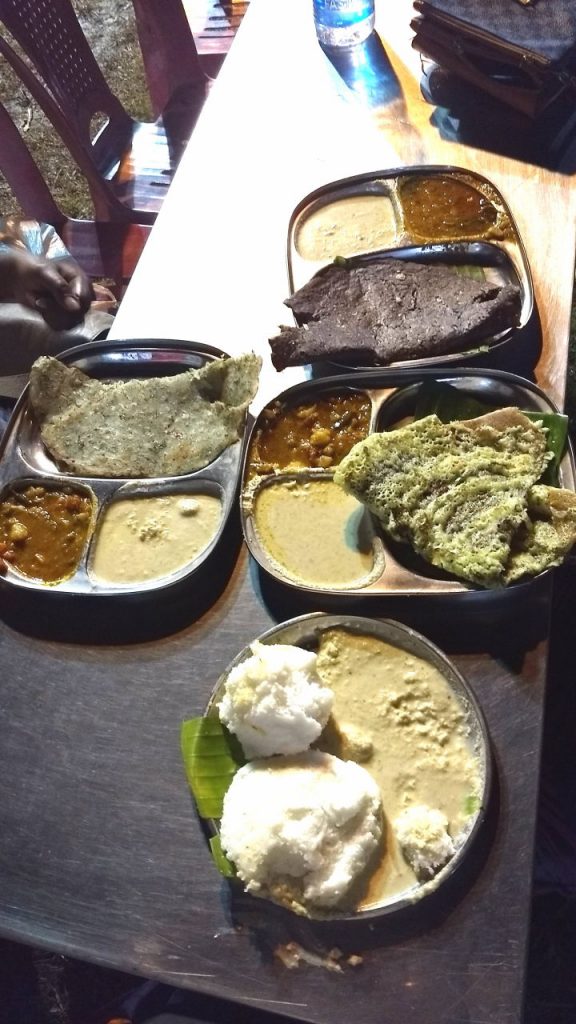
Kannadigas take their dosas seriously. Tasting different types of dosas at exhibition ground across the Mysuru palace.
Mysuru is well-known for its delectable food palate. There are items so typical of the city that they are named after the city. Mysore masala dosa is by the far the tastiest delicacy you will eat in Mysuru city. But there are several other snacks such as bonda, medu vada, masala vada, akki roti (roti made of rice, similar to Maharashtra’s bhakri), avalakki dosa (dosa made of poha), Hesaru dosa (green dosa made of moong, similar to Andhra’s pesarattu). For idli, you should try Mallige idli, which is a soft and delicate idli. Mylari’s on Vishwamanava Double road in Kuvempu Nagara is one of the best for the choiciest south Indian delicacies in Mysuru. While in Mysuru, you should forget about tea and always have fresh filter coffee. Mysuru gets its coffee from neighbouring Coorg district, where coffee is the star crop. Filter coffee in Mysuru is excellent anywhere you go, be it the upscale restaurants near Mysore palace or the small coffee joints on Chamundi Hill near the temple. If you are looking for a non-caffeinated beverage, then you have an extremely delicious choice. Almost every place that makes coffee also makes baadaam milk. This is made by heating up milk and the mixing into it a sachet of instant MTR baadaam milk mix. The mix is made of powdered almonds and cardamom. MTR is a very popular brand in Karnataka.
Getting to Mysuru
Mysuru is a well-connected city in India. Here are some options to reach Mysuru.
Air
The Mysuru airport is a hub within Karnataka and has connections to all major cities in India. Most frequent connects are to Bengaluru, Hyderabad and Kochi. Flights to Mumbai, Chennai and New Delhi are also aplenty.
Rail
Mysuru Junction is an important railway station in Bengaluru division of Southern Railway. Trains of all kinds, including Duronto, Shatabdi and Hamsafar travel to Mysuru.
Road: Public transport
Mysuru’s bus depot has buses to all over Karnataka, Kerala and Tamil Nadu. State buses from all three states either terminate at or pass through Mysuru.
Road: Self-driving
- The best way to reach Mysuru is via Bengaluru. The Bengaluru – Madduru – Mysuru highway is a breeze, allowing you to traverse the 150 km between the two cities within 2 hours. An alternative route to use during monsoon is the Bengaluru – Shivanasamudra – Somanathapura – Mysuru route, where you get to see the Shivanasamudra waterfalls formed by Cauvery river.
- If you are driving from western districts of Karnataka, then a good highway to use is the Shivamogga – Chikkamagaluru – Hassan – Javagal – Arsikere – Shravanabelagola – Srirangapattana – Mysuru route. This route is extremely historic with some of the best Hindu temples and Jain temples constructed during the Hoysala dynasty. This is the highway we used during India 360.
- If you are driving from coastal Karnataka, Goa or coastal Maharashtra, a beautiful route you can use is the Mangaluru – Putturu – Subrahmanya – Madikeri – Hunsuru – Mysuru route. Madikeri is the headquarters of the Coorg or Kodagu district. The Ghat roads between Subrahmanya and Madikeri is full of waterfalls during monsoon.
Getting around Mysuru and their unique Trin Trin system
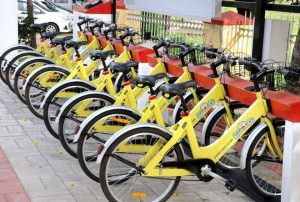
Mysuru has an excellent city bus service and state bus service. The bus station is right outside the Mysore palace. There is no concept of local train service or metros yet. Auto rickshaws are also a great option. However, the residents of Mysuru have it extremely lucky. If you are in Mysuru for at least a month, then you can get a smart card to give you access to Trin Trins. These cute sounding things are corporation owned bicycles that can be picked up from several Trin Trin pads around the city. The bicycles are chained to posts and can be unlocked by using the city smart card. The smart cards are prepaid and you will be charged for time for which you use a bicycle. Once you drop your bicycle off at any Trin Trin pad in the city and lock it in place, you need to place your card on a dock’s smart card slot. The tariff equivalent to the time for which you hired the bicycle will be debited from your smart card. Hires upto half an hour are free of cost. Here is the link to Trin Trin bicycles and how they work.
Souvenirs / gifts from Mysuru
Mysuru is excellent when it comes to picking up souvenirs. There are so many things unique about the city. Pure sandal and soaps made of sandal (the famous Mysore Sandal soap and plenty of local brands) can make excellent souvenirs or gifts. While you cannot carry Mysore masala dosa or Mysore back home with you, you definitely can get a box of Mysore Pak. MTR’s or Maiyya’s packaged snacks are also an excellent choice. If you really want to push your limits, then you can go for a piece of Mysore woodwork portrait. Mysore woodwork is a unique form of portrait making that involves no paint. A scene is made by sticking thin wood chips of different colours on a base wooden board. For instance, rose wood is used for red coloured areas of the portrain, ebony for black and so on. The effect is very artistic.
Conclusion
Mysuru is a city hard not to fall in love with. It is architecturally beautiful, it is close to nature with hills and trees. Beautiful destinations like Coorg, Ooty and Wayanad are within 3 hours away. The city is modern and always up with the times, but it has consciously refused to grow too fast like Bengaluru, Mumbai or New Delhi. The concept of Trin Trins is simply genius. For us, Mysuru was love at first sight and one of the cities we would consider moving to for a few days if we ever get tired of Mumbai.

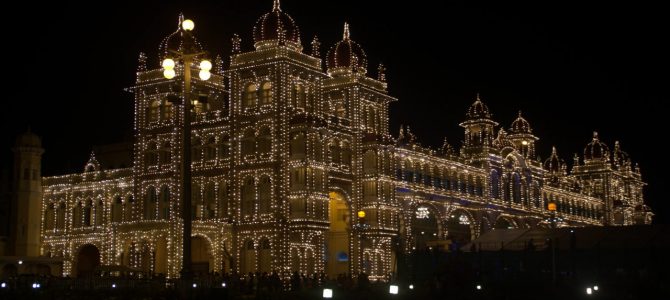
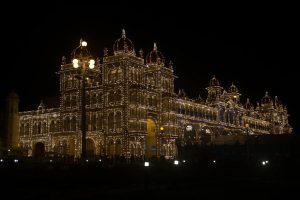

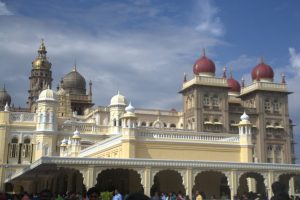
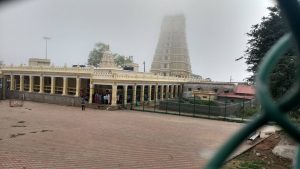
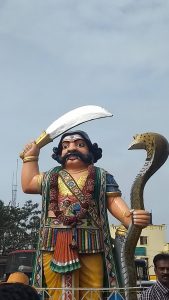
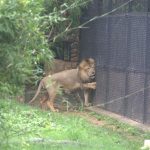


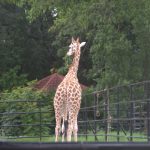
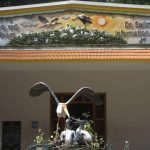

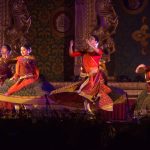
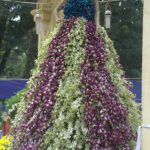

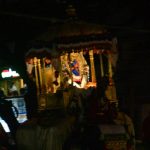
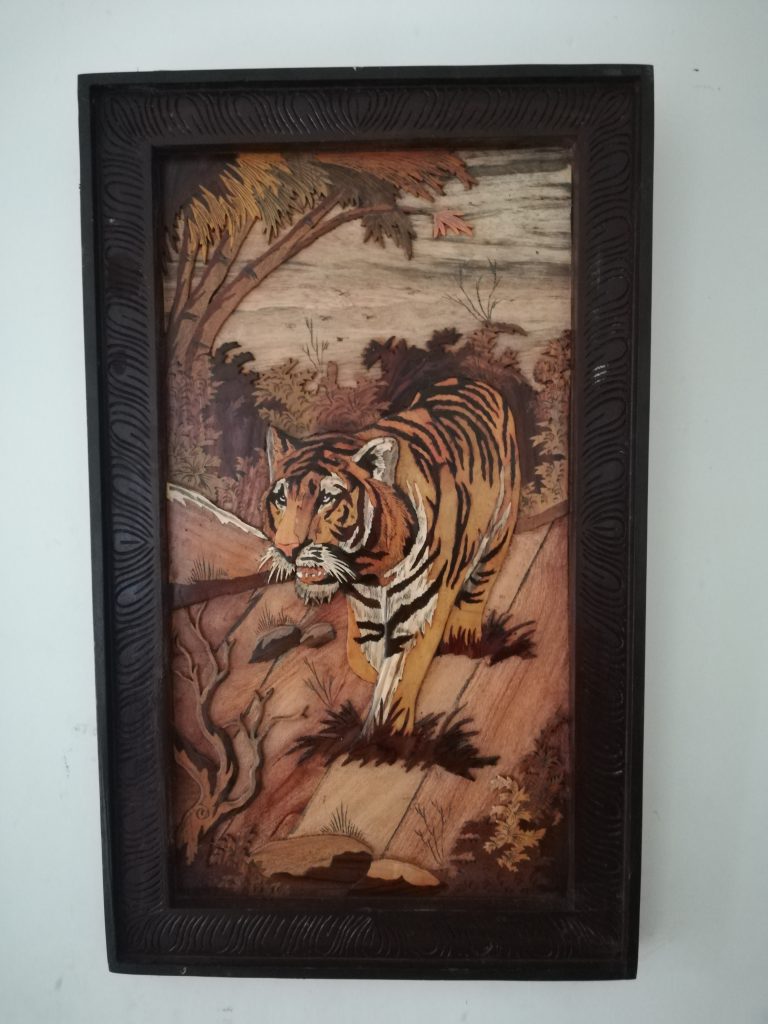
Pingback: Thematic Trips: Following the Cauvery river | India 360